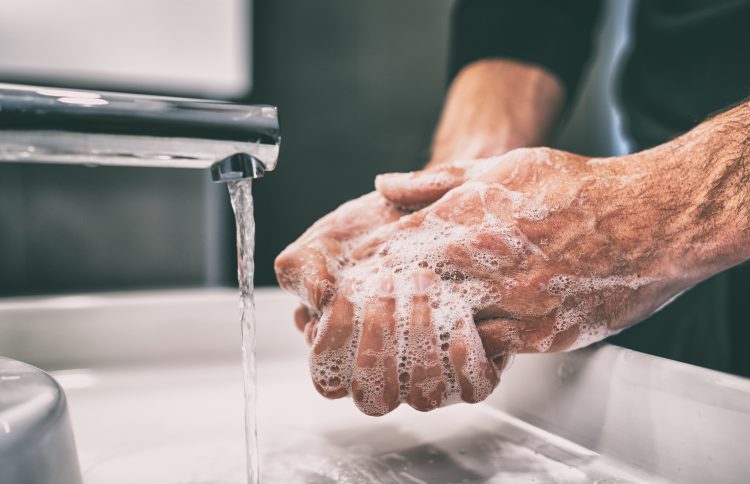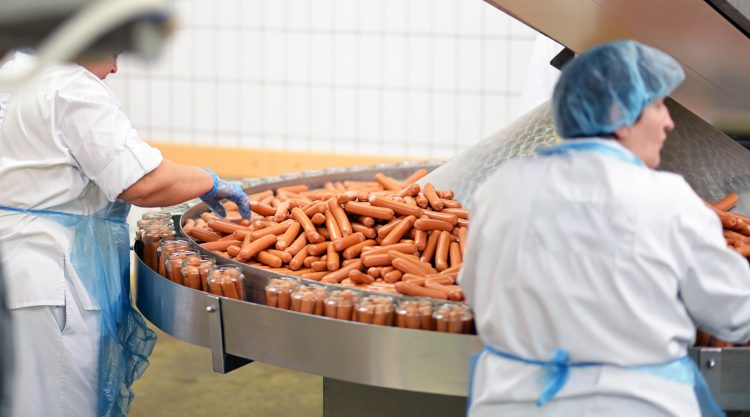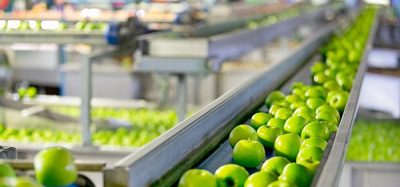Keeping safe in scary times
- Like
- Digg
- Del
- Tumblr
- VKontakte
- Buffer
- Love This
- Odnoklassniki
- Meneame
- Blogger
- Amazon
- Yahoo Mail
- Gmail
- AOL
- Newsvine
- HackerNews
- Evernote
- MySpace
- Mail.ru
- Viadeo
- Line
- Comments
- Yummly
- SMS
- Viber
- Telegram
- Subscribe
- Skype
- Facebook Messenger
- Kakao
- LiveJournal
- Yammer
- Edgar
- Fintel
- Mix
- Instapaper
- Copy Link
Posted: 18 June 2020 | Bethan Grylls (New Food) | No comments yet
What hygiene measures and extra precautions should be taken by food and beverage manufacturers, suppliers and distributors during the COVID-19 outbreak? Bethan Grylls investigates, receiving some vital advice from a hygiene expert.


The food and beverage supply chain is fundamental to our daily lives and the economy. We all need food and drink to survive, so it is critical that each step in the chain remains operational throughout these uncertain times.
Although current opinion is that animals in China were the likely source of the initial coronavirus (COVID-19) infection,1 the European Food Safety Authority (ESFA) has stated that it is unlikely that the virus can be transmitted through the consumption of food.2 Instead, it is believed that the disease spreads from person to person, mostly via sneezing, coughing or exhaling. The virus can also live temporarily on surfaces if an infected worker has come into contact with that area.
With this in mind, it is crucial that key workers, such as those operating in manufacturing plants, follow strict hygiene protocols. The food and beverage industry already adhere to stringent safety measures, but it is now more important than ever that these standards are followed – and even heightened – to protect workers and customers from COVID-19.
Hygiene management
“Food manufacturers must continue to follow current Good Manufacturing Practices (cGMP),” Akansha Sohani, a hygiene expert and certified lead auditor (ISO22000-2005), advised.
“They must focus their attention on five key things: people, premises, processes and products, and check that the precautions they’re taking in each area are sufficient.”
Sohani stressed the importance of following a Food Safety Management System (FSMS) that incorporates the current food hygiene guidance and Hazard Analysis and Critical Control Point (HACCP) processes.
“Hygiene management should complement and be part of a company’s management system, which includes the quality management system. An employee, trained accordingly, should be appointed as Hygiene Supervisor. They are responsible for the functioning, controlling and continuous optimisation of the hygiene management system and have particular duties under food law.” These include that:
- Biometrics are frequently cleaned and sanitised after beginning and end of shifts
- Staff are trained appropriately in food hygiene and hygienic practices
- Effective supervision of staff is carried out to reinforce hygienic practices
- Necessary facilities, for example, hand washing points and toilets, are provided to enable staff (including delivery drivers) to practice good hygiene
- Staff and contractors report any physical signs/symptoms of illness before commencing work or while in the workplace
- The hygiene supervisor remains vigilant and ensures that staff are fit and well to work.
Surfaces
Depending on the type of material, COVID-19 can live on a surface for several hours or even days. If a person comes into contact with such a surface and touches their eyes, nose or mouth, it is indeed possible for them to become infected.1
The US Food & Drug Administration (FDA) has stated that as an extra precaution, food facilities may wish to consider “a more frequent cleaning and sanitation schedule for high human contact surfaces”.4
“Food facilities may wish to consider a more frequent cleaning and sanitation schedule for high human contact surfaces”


Hands should be washed on a regular basis with soap and water for at least 20 seconds
The likelihood of catching the virus from packaging that has been moved, travelled and exposed to different conditions is minimal, according to the World Health Organization (WHO).3 However, packaging should still be cleaned and handled in line with standard food safety practices.
Hand washing
Hands should be washed on a regular basis with soap and water for at least 20 seconds.
Sohani outlines particular occasions when food workers must wash their hands:
- At the beginning and end of each shift, including breaks
- After using the washroom
- After picking up product waste from the floor
- Any time hands become contaminated (touching dirty surfaces, rubbish bins, etc)
- After blowing their nose, coughing, sneezing, etc
- When entering the production floor from a less‑clean area (eg, outside or in a canteen)
- After handling money.
If soap and water are not available, an alcohol‑based hand sanitiser can be used. The sanitiser must contain at least 60 percent alcohol. However, if hands are visibly dirty, soap and water must be used. It is worth noting that, generally, sanitisers should not replace handwashing in food production and retail settings, but rather be used in addition.
“Inconsistent approaches have the potential to jeopardise our food system”


A distance of two metres should be maintained between people to reduce the chances of exposure to COVID-19
“Workplaces should place sanitising hand rub dispensers in prominent places around the workplace and make sure these dispensers are regularly refilled,” Sohani advised.
Due to the lack of hand sanitisers available on the market, the FDA has reported some food establishments setting up quaternary ammonium hand-dip stations and sprays at 200ppm concentration. However, it has stressed that these products are designed for surfaces and should not be formulated for use on skin.
Social distancing in the plant
“When employees work in processing and other sensitive areas, the Health and Safety Executive (HSE) recommends that social distances be implemented to help slow the spread of COVID-19. This means maintaining a distance of two metres (6.6 feet) between people and reducing social interactions,” Sohani explained.
- She outlined how the food industry should be implementing social distancing:
- Limit the number of staff in a kitchen or food preparation area at any one time
- Space out workstations and food preparation areas
- Limit the number of people (staff, delivery drivers, customers) who can come into your premises at any one time
- Restrict entries of visitors and customers to processing areas for a period of time
- Control frequent movement of employees from the processing area to other areas
- An identified area should be marked for walking and moving materials in the plant.
It is worth noting the FDA’s caution that: “Maintaining social distancing in the absence of effective hygiene practices may not prevent the spread of this virus.”4
Staff awareness
“Food industry hygiene officers should ensure that staff are aware of the COVID-19 situation and the advice being given in relation to symptoms, social distancing, self‑isolation and travel,” Sohani added. This includes the following:
- Having display boards that clearly indicate the symptoms of COVID-19, as well as measures to be taken to stop spreading the virus
- Protective clothing to be provided to every food handler; this should be cleaned and sanitised every day
- When possible, employees should work remotely
- Workers’ entry into the plant should be restricted so that entry is only possible when required.
Waste disposal
Sohani also outlined that: “All food businesses should make sure that waste disposal of all food waste and general waste is disposed on a daily basis. Gloves, masks and aprons should be disposed of appropriately immediately after use, as they can be the major source of spreading virus and contamination.”
Review health policies and procedures
Current employee health policies should prohibit food workers from working in food establishments while sick. Sohani recommended the following:
- Review your sick leave policies and expand upon paid leave options for your workers, if possible. Offering paid sick leave will help mitigate the economic impacts of missed work for your employees, while simultaneously keeping the rest of your employees and customers well
- Workers that are exhibiting symptoms matching COVID-19 should stay at home. Where possible, employees with family members/caregivers with symptoms matching COVID-19 should also stay at home
- Talk with your workers about employee health requirements and expectations. Now is a good time to retrain your employees as needed to ensure everyone is on the same page
- Food workers and managers with coughing, shortness of breath, fever, or other symptoms of illness should not return to work until they are symptom-free. Current guidance is to stay at home until at least 72 hours after symptoms have disappeared. This may be altered by medical diagnosis, local health direction, changing community conditions, etc.
What to do when an employee tests positive
“Inconsistent approaches to reacting to an individual, particularly manufacturing personnel, who test positive for COVID-19, have the potential to jeopardise our food system,” guidance issued by the Food and Beverage Issue Alliance warned.5 If someone becomes unwell, with a persistent cough or high temperature, in the workplace, the advice is to send them home. Guidance can be found on your local government website, eg, Gov.uk, CDC (Centres for Disease Control and Prevention).
Managing transportation and delivery of goods
Transport containers should be checked by a supervisor, who will ensure the vehicle is:
- Clean and in good condition
- Protecting food from contamination, allowing separation of foods and other goods that may cause contamination
- Easy to clean and/or disinfect
- Not used to transport prohibited products.
“Proper training and awareness should also be given to drivers on social distancing when picking up materials and passing deliveries to customers. They should be wearing suitable protective clothing, maintaining a high degree of personal cleanliness, and sanitising hands before and after each delivery transaction,” Sohani said.
There are arguments against wearing gloves, as some have suggested it offers a false sense of protection, with individuals more likely to touch their face. The best way to protect yourself? The general consensus seems to be: avoid contact with your nose, mouth and eyes, and wash your hands thoroughly and regularly in soapy water.
References
- https://www.ecdc.europa.eu/en/novel-coronavirus-china/questions-answers
- https://www.efsa.europa.eu/en/news/coronavirus-no-evidence-food-source-or-transmission-route
- https://www.gov.uk/government/publications/covid-19-guidance-for-food-businesses/guidance-for-food-businesses-on-coronavirus-covid-19
- https://www.fda.gov/food/food-safety-during-emergencies/food-safety-and-coronavirus-disease-2019-covid-19
- https://static1.squarespace.com/static/5e7d1107dac60a6b3e3f098d/t/5e8355cddcb8ff1e7ab5a7ae/1585665486583/FBIA+COVID19%2BCase+Recommended+Protocols_30Mar2020+-+Version+3%5B1%5D.pdf
Note
Article accurate at the time of writing (Issue 3, New Food 2020)
Issue
Related topics
Contaminants, COVID-19, Food Safety, Health & Nutrition, Hygiene, Mycotoxins, Pathogens, Quality analysis & quality control (QA/QC), Recruitment & workforce, Sanitation
Related organisations
Centres for Disease Control and Prevention (CDC), European Food Safety Authority, Food and Beverage Issue Alliance, Gov.uk, Health and Safety Executive (HSE), US Food & Drug Administration (FDA), World Health Organization (WHO)







